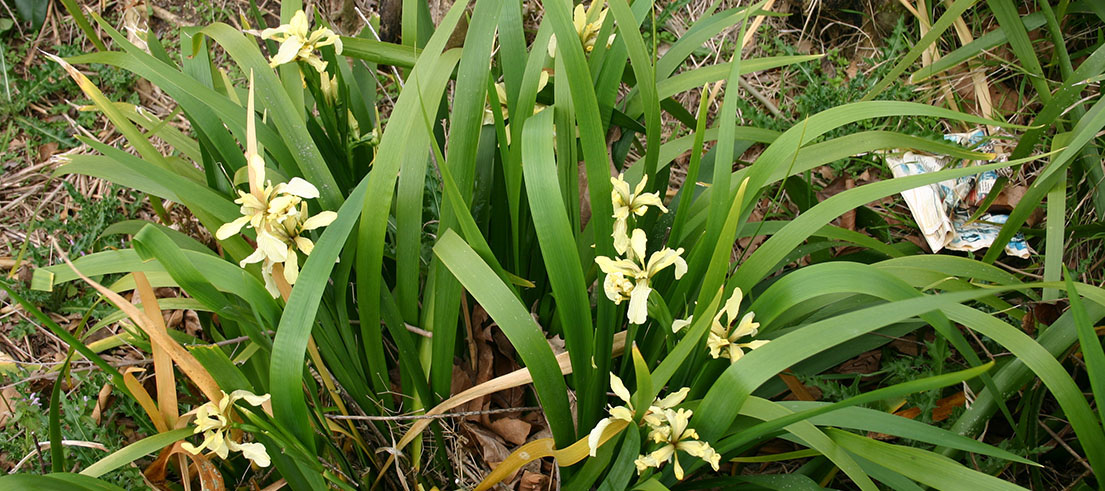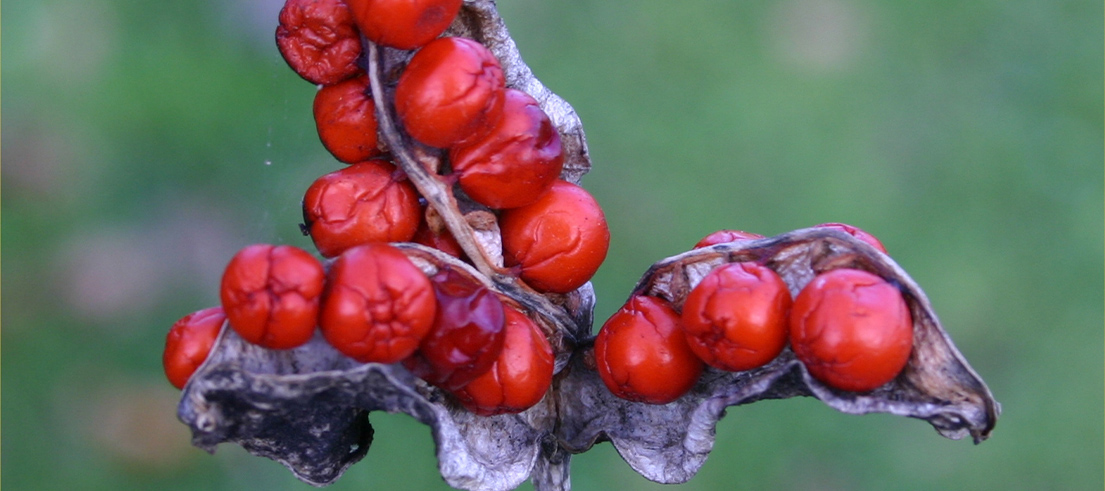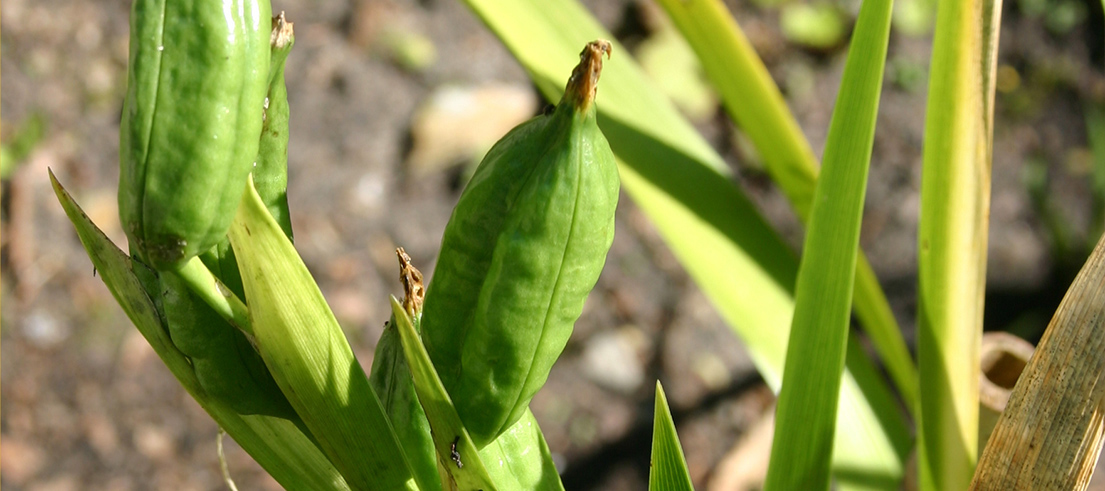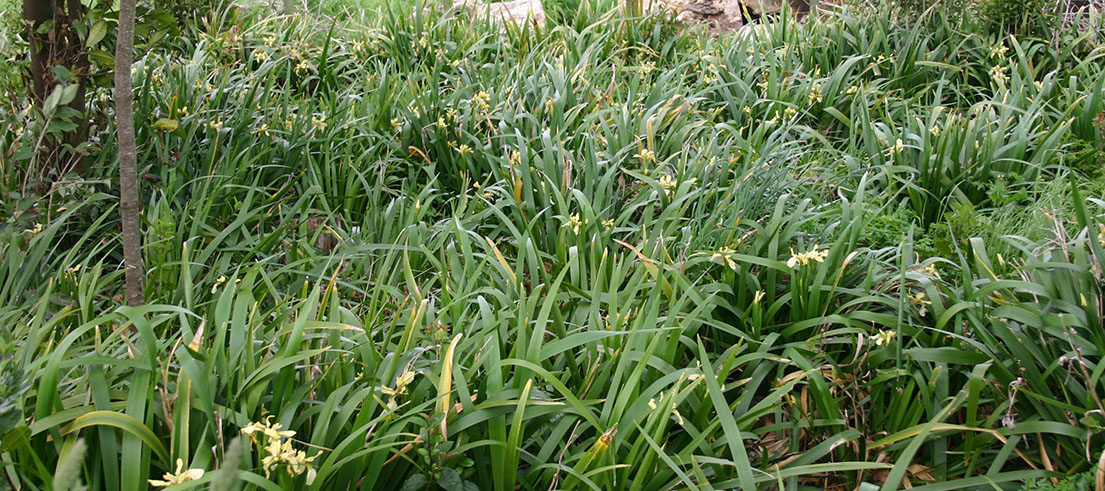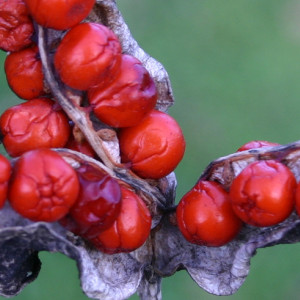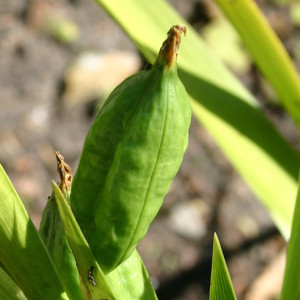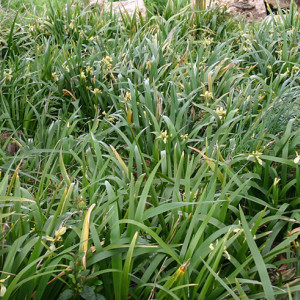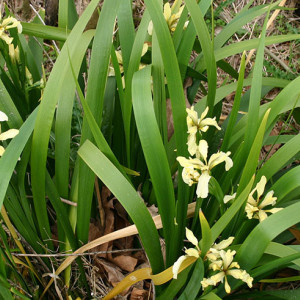A clump-forming perennial herb, around 80cm tall with rhizomes. It gets its name from the foul odour that is released when the leaves are crushed. It prevents native seedling establishment and displaces vegetation.
Description
- Leaves are sword-shaped, leathery, dark green and foul-smelling when crushed.
- Flowers are pale yellow with green-brown/brown-purple markings, grow on erect stem, and occur in late spring and early summer.
- Fruits are three-sided capsules that split open to release many round, red seeds.
- Seeds dispersed by birds and gravity. Vegetative spread from rhizome fragments, dispersed by water.
- Human-mediated dispersal through dumping of garden waste, deliberate plantings and movement of contaminated soil and machinery.
- Habitats include disturbed forests, forest and riparian margins, shrublands, scrub, coastal areas, wastelands, and roadsides.
What you need to know
Forms dense clumps, displacing native vegetation and preventing native seedling recruitment. Poisonous to humans and livestock.
Poison advice
All of the plant is poisonous to humans if ingested, especially the berries which look enticing to children. Skin irritation may occur and can cause dermatitis. Pets should be kept away from stinking iris.
If you think someone has ingested stinking iris, contact your local poison information centre on 0800 POISON (0800 764 766) or your local vet.
Management approach
Community Led
These organisms have not been legally declared as pests but may be of interest to the public as they occur regularly in the environment. They may be capable of causing adverse effects to the values of Waitaha/Canterbury.
Consider removing both these invasive species from your property and consult your local council for appropriate disposal. Consider lower-risk alternatives for your garden, such as native plants.
Control
Site management
Follow up treated areas three times per year. Encourage natural regeneration of native plants or replant treated areas where possible after two to three treatments to establish dense ground cover and minimise reinvasion.
Physical control
Dig or pull plants out.
Plant parts requiring disposal: all parts.
Contact your local council for appropriate disposal locations.
Chemical control
No qualifications: Foliar spray with 100ml glyphosate per 10L of water.
Certified handler/experienced agrichemical user: Foliar spray with 100ml glyphosate per 10L of water and 20ml penetrant.
Caution: When using any herbicide or pesticide please read the label thoroughly to ensure that all instructions and safety requirements are followed.
Biological control
Biological control is currently not available for this species.

